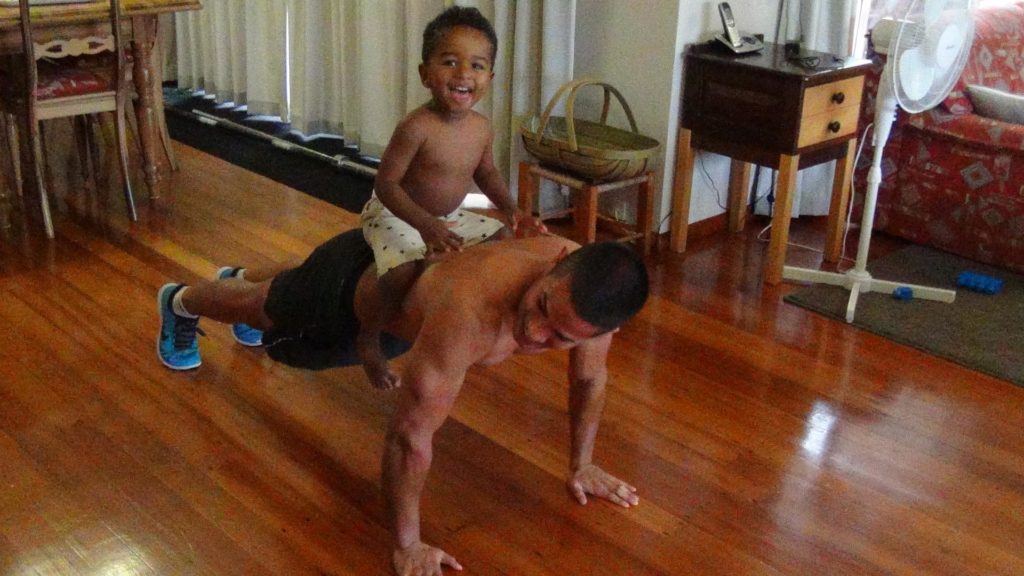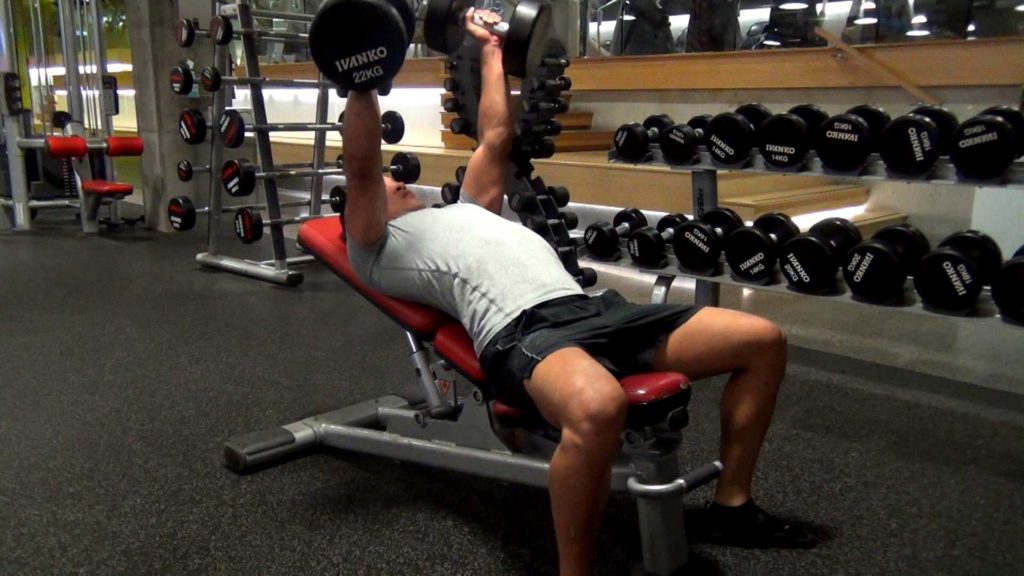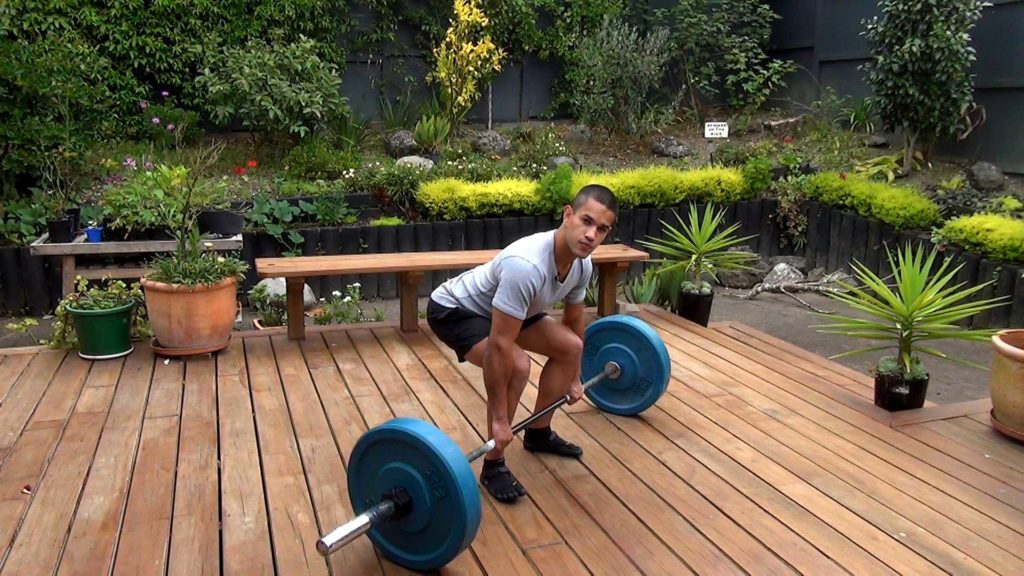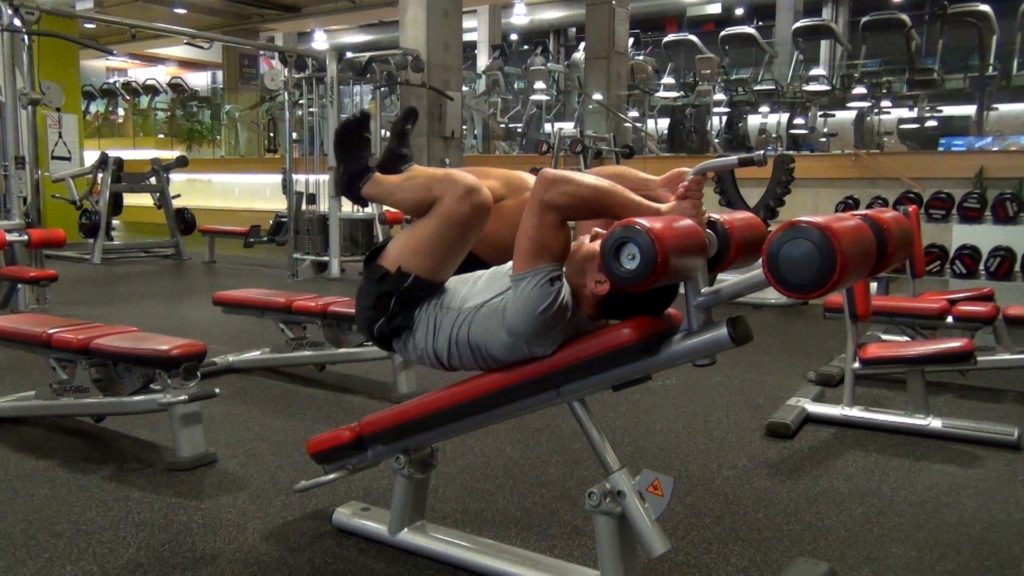Functional Strength Training
A successful gym exercise program focuses on building functional strength first to set the foundations.
Being functional means you are able to perform and move with purpose – the ability to do practical activities such as run quickly, jump, squat with full range, lift and carry objects.
A functional exercise program reduces the risk of injury, improves joint mobility, stability and coordination. If you can move well you will enjoy sport and recreational activities more and will make keeping up with training easier.
Most people lack control of their body – you need to be able to coordinate it to stimulate it therefore achieving functional freedom is priority.
Functional Exercises and Workouts
Functional strength programs are built with compound exercises – movements that move multiple joints when executed.
Squats are a compound exercise that moves your ankle, knee and hip joints and therefore work all the muscles with tendons crossing those joints.
As you achieve the ability to squat into full depth your lower body is stretched out and that is how joint mobility is improved. The lower body is often tight from being seated too much.
Another benefit of using full range of motion (ROM) compound exercises is it targets more muscle e.g. in a full squat the hamstrings and glutes are further stimulated when you drop your hips below your knees.
So if you can squat a heavy you will be stimulating a lot of muscle at once because more fibers in each of the muscles will be recruited to produce force through a contraction.

It’s the combination of – working more joints, taking them through their full range of motion and with intensity (heavier weights) which stimulates a lot of muscle, faster and with far fewer exercises.
The natural motion of compound exercises trains your body to work and coordinate itself as a unit. When you improve coordination you learn to effectively synchronize multiple joints and muscles and this has a crossover to real life activities and sport.
Remember – muscle raises your metabolism so it burns fat energy stores helping to keep you lean.
Key compound exercises
Upper Body Push: Bench Press, Pushups, Dips, Shoulder Press, *Push Press
Upper Body Pull: Dumbbell Rows, Bodyweight Rows, Pull Ups
Posterior Chain: Deadlifts, Hip Raise, *Romanian Deadlift, *Swings, *Power Cleans
Lower Body: Squats, Lunges, Step Ups, *Pistol Squats, *Rear Foot Elevated Split Squat
*Not necessary for complete beginners, learn the others first

Example Exercise Program
You will use the exercise list above to create both the strength and circuit workouts.
Soon I will introduce the exercises for the core and cardio workouts.
| Monday | Strength Workout | Core Workout |
| Tuesday | Kick Boxing | |
| Wednesday | ||
| Thursday | Kick Boxing | |
| Friday | Circuit Training | Finisher: Burpee Challenge |
| Saturday | Run 6km | Kick Boxing: Bag Workout |
| Sunday |
Every 8 weeks you may reduce workout frequency for 2 weeks before restarting – it is an opportunity to recover. This is called a taper.
Example Strength Workouts
| Strength Workout #1 | |||
|---|---|---|---|
| Exercise | Sets | Reps | Rest |
| A1 Bench Press | 3 | 6 to 12 | 1min |
| A2 Dumbbell Row | 3 | " | 90sec |
| B Squat | 3 | " | 2-3min |
| C Hip Raise | 3-4 | 20 | 90sec |
| Strength Workout #2 | |||
|---|---|---|---|
| Exercise | Sets | Reps | Rest |
| A1 Pullups | 3 | ~ | 1min |
| A2 Dips | 3 | ~ | 90sec |
| B Deadlift | 3 | 6 to 12 | 2-3min |
| C1 Alternate Lunges | 3 | 12ea | 1min |
| C2 Shoulder Press | 3 | 6 to 12 | 90sec |
Notes and Key
You only need 1 or 2 strength workouts per week with 4 to 5 exercises per workout. The exercises stimulate a lot of muscle and can quickly fatigue you if you are training hard. Hence why 5 is the most you will ever need at once.
Unless you are performing a lengthy warm up, workouts should not exceed 60 minutes – it’s about a quality 45 to 60 mins.
Too many low to moderate intensity workouts in a week will drain you mentally and physically over time, keep workouts intense and within the hour. Get in the gym, get it done, get out.
If you are short on time you may perform 2 hard sets per exercise, you will still improve.
ea = each e.g. perform 12 reps per side
Interset Rest
Rest periods range from 90 seconds to 3 minutes to ensure enough recovery for another intense set of work.
Stretch muscle groups such as the hamstrings and groin while you are resting – it will help you reach full range of motion in the following exercises.
Supersets
In the strength workouts i’ve reduced rest time through the use of supersets which alternates two exercises that target different muscle groups.
You would still rest between the super set exercises but it would be much less because the paired exercises will target a different muscle groups and therefore you are still giving the first worked muscle group the necessary time to recover.
In strength workout #2 you would perform Pullups for A1, rest for at least 45 seconds before performing dips for A2. After your set of dips you would then rest 90 seconds before your second set of the superset.
Don’t think too hard, do it and you’ll figure it out fast.
Warm ups
Get the blood flowing, muscles warm and joints moving throughout their full range of motion in preparation for the workouts demands.
Run or skip for at least 10 minutes, follow with 20 Overhead Squats, 6 Inchworms and some star jumps if you like.
Static stretches for the hamstrings, groin and hip flexors will reduce muscle tightness and your open range of motion so you can achieve a full squat, comfortable deadlift or a kick in kickboxing for example.
As a personal trainer I double the warm up as an opportunity to assess my clients, so I know what needs work and what exercises to scale back on.
If posture and mobility is lacking we will perform partial deadlifts. If they struggle with the inchworm I would instead program knee push ups until they have the strength to perform a normal body weight pushup.
If a broomstick overhead squat and inchworm is comfortably performed, mobility and strength is always good to go.
Knowing this you could essentially asses yourself.
Exercise Regression, Progression and Variation
The workouts are very flexible in the way you can progress or regress any exercise to suite your ability.
All of the free weight tools (dumbbells, barbells, kettlebells and bodyweight) have their own unique individual benefits and can create different variations of the same exercise.
It is encouraged you ‘exercise your variety’ and eventually learn to incorporate all tools to prevent plateau to improve in new ways and see continual development.
Beginners may have to build confidence by squatting onto a box first without a weight. Lower the box until you are able to reach a full depth. I often take beginners through this sequence in as little as 2 minutes – very rarely will it take more than one session to correct. If it is taking any longer you are likely going about it incorrectly. Squatting is like walking, every human can easily achieve it.
The next step is Goblet Squats and if flexibility is an issue with the knees collapsing then goblet squats are useful to help stretch out the groin.
Progress into Back and Front Squats. Overhead squats is a step up and an exercise to strive towards.
You can perform squats with a single leg (unilateral) – options are Pistol Squats, Rear Foot Elevated Split Squats. Step ups is a nice and simple single leg option.
Click to watch my videos to learn how to alter the difficulty of these upper body body weight exercises
– Bodyweight Rows
– Gymnastic Ring Rows
– Ring Pushups
– Try out the Gymnastic Ring Superset
– Handstand Pushups are an advanced bodyweight progression.
When you can do 12 normal Dips add Ring Dips.
Once you’ve learnt both the barbell and dumbbell press learn the Push Press.
My programs and workouts have drop down menus for all the variations of a particular exercise making it very easy for you to update.
Free Weights
Dumbbells, barbells, kettlebells and your own bodyweight are the training tools we use and are all classed as free weights. Free meaning they move in free motion.
Machines lack free motion – they are carefully calibrated to move a resistance in a fixed plane when you apply force so you yourself are not balancing and controlling it.
Many smaller stabilizer muscles are stimulated when you control and balance an object. By using machines the muscles will be under developed.
Machines do not always take your joints throughout their full range of motion and you are often seated on your butt when using them.
Posture and Muscle Balance
Pushing exercises work the anterior muscles (the front) and the pulling exercises target the posterior – the back muscles which are often weak and strengthening them will pull your skeleton back into place. Improving your posture.
Muscle balance and posture forms your foundation. Your joints will be more stable, stronger and become far less susceptible to injury.
The technique behind lifts like the deadlift will teach you how to use your hips and keep your back straight when picking up heavy objects. Deadlifts strengthen the back and posterior-chain muscle groups. It even strengthens your traps and forearms too.

Performing box jumps and high intensity burpees can be detrimental if you’ve never squatted before. Because if you did not know how to land from a jump with your knees collapsing inward and your joints unconditioned then you are more prone to injury. Learning exercises like the squat first will safely prepare your muscles and joints for these athletic movements and teach you how to absorb force.
Circuit Training
Circuit training has many benefits from fat loss, building lean muscle, improving muscular and cardiovascular endurance and functional ability in general.
You do need to build your strength so you can lift a decent load. Keep up with at least one strength training session because max strength helps for lifting heavier weights for more repetitions. It trains your nervous system to build pathways to more fibers in your muscle so that they can be stimulated. A trained persons muscles are stronger because they can recruit more fibers in their muscles. As well as the fibers being bigger in size (hypertrophy).
I enjoy including one circuit workout per week and rotate between my pool for variety and continuous progression over the weeks.
You can complete a circuit in 20 minutes or less, it is practical and easy to schedule in your week. Especially useful if your routine is already full of other sport and recreational activities.
Bench Complex
Performing the 3 exercises completes 1 round, complete 3 more and record the time taken to finish all. Rest only as needed.
| Exercise | Reps | Leaderboard Requirements |
| Barbell Bench Press | 12 | 40kg (Females, 25kg) |
| Dumbbell Row | 12ea | 20kg (Females, 14kg) |
| Alternate Lunge | " | " |
Barbell Complex
With a 20kg bar, collect as many rounds as possible in 16 minutes. That’s your score.
| Exercise | Reps | Leaderboard Requirements |
| Shoulder Press | 10 | Full extension @ elbow, no using the hips to push press. |
| Front Squat | 10 | Full Squat |
| Bent Over Row | 10 | Torso near horizontal to floor or exclude exercise. |
| Deadlift | 15 | |
In the two circuits above we are simply using the standard gym compound exercises to build muscular endurance.
Circuits can also be programmed for more of a cardiovascular endurance emphasis through the use of various bodyweight exercises (burpees, jumping jacks, mountain climbers) and odd objects (medicine ball slams, tyre flips, sledgehammer chops and sandbags). But I prefer to to add those as a finisher instead. You will still get a cardio workout with muscular endurance circuits.
Circuits are great for bench marking your progress by recording the score and comparing at a later date. Many personal training clients have doubled their score on the above circuits in as little as 8 weeks of training!
I program each circuit to use different free weight tools, muscle groups with both bi-lateral and uni-lateral variations so that you improve in all areas.
I share many more Circuit Workouts in my training programs.
Core Training
If you want to work out your core muscles you first need to understand that the core as a whole has 4 planes of motion and a stabilization role.
The core can move in 4 directions – it can flex forward, to the side, it can extend and rotate.
For complete development of the core musculature your training program needs to include exercises that collectively work all 4 planes throughout their full range of motion, as well as stabilization exercises.
1. Core Flexion – all leg raise or sit up variations, perform both types.
2. Core Lateral Flexion – side bending exercises, including use of your own bodyweight off of a bench.
3. Hip Extension – hip extension exercise, superman’s, kettlebell swings, deadlifts.
4. Core Rotation – windshield wipers, rotational twists with a weight plate / wood chop exercise (weight plate, barbell)
5. Core Stabilization – ab wheel rollouts, plank, L sit, squats, deadlifts and many bodyweight exercises.
Compound exercises like squats, deadlifts, bench press and push ups indirectly stimulate the core through stabilization. This is because your core is contracting to stabilize the load whether it’s your own bodyweight or a barbell.
Your core is even stabilizing your body when performing actions for other planes such as leg raises which falls under core flexion, so there is some crossover between the 5 actions above.

| Core Workout 1 of 4 | |
|---|---|
| A1 Decline Situps | 20 to 40 |
| A2 Decline Leg Raises | " |
| B Roll Outs | 40 to 60 |
The core musculature is best trained with high repetition – I suggest you leave low reps and maximal strength training for the compound exercises as they hit multiple joints. No one ever does a 2 or 3 rep max situp.
I share more Core Workouts in my training programs.
Cardiovascular Training
Kick Boxing, Run, Row, Swim, Burpees, Skipping, Circuit Training, Finishers.
Perform time trial runs: 5km or 10km (Strava is a useful phone app for this)
Or for interval training alternative you may sprint a fields length, walk or jog back and repeat a dozen times.
Finishers are short, sharp grand finales that are performed at MAX intensity at the end of your workout . You will already be fatigued from the workout so this is an opportunity to squeeze out some extra cardio gains. Most of the finishers will benefit strength and power as they are quite explosive.
Not all workouts will follow with a finisher, just on an as needed basis.
- Row 1500m – How fast can you do it? Time trial
- Burpee Challenge – How many burpees can you do in 5 minutes?
- Kettlebell Swing Challenge – Time trial 120 swings with 20kg
- Shuttle Run 5m, 15m, 25m
It is the combination of sport, circuit training, finishers and cardio workouts like running that get your cardiovascular fitness up to standard. They all use a form of high intensity interval training (HIIT) which is the best method for improving cardiovascular endurance
You will not need to accurately measure your intervals and rest periods with a stopwatch. Sports like kick boxing naturally follow a HIIT protocol as you punch and kick hard at an opponent / boxing bag with periods of lowered or no intensity during round breaks for example. When you perform a circuit you will instinctively take short breather and water breaks despite the clock continuously ticking.
Without having to analyse and carefully plan and fuss over details in your program this system easily covers all of your bases by improving all 3 bioenergetic systems.
In addition to all the above HIIT burns a lot of fat. While HIIT targets all 3 energy systems, it primarily works your anaerobic energy system which results in your body taking in more oxygen following the workout, this is called Excess Post-Execise Oxygen Consumption. Your body works hard to recover from the intense workout by burning fat for energy.
Lengthy continuous bouts of cardio such as long jogs improve the aerobic energy system and while it may burn fat during the workout it burns little fat in the hours following the workout. Exercise programs based on slow forms of exercise are therefore less effective.
Avoid electrical cardio machines that crowd gyms like cross trainers, treadmills, stair climbers and all that rubbish. They do not mimic real life activity nor take your joints through much range of motion. Treadmills force you to take a lot of small steps and you are bounced upward like a trampoline whereas when running outside you are actually exerting force into the ground with your hamstrings to propel you forward.
Frequently Asked Questions
A bodybuilders regimen can consume a lot of time as they perform 5 gym weight training sessions per week, in a split routine with one body part per day. They then perform their cardio activity either after or in separate workouts e.g. in the morning. This is not very practical and a very one sided approach as you can’t possibly fit in other important activities into your week.
You need adequate rest as sleep is vital for fat loss and muscle development, it’s how your body repairs and restores.
7+ hours sleep a night is necessary for health and fitness and more important than the exercise program itself.
Many athletes and trainers (especially online trainers) would like you to believe there is a magic combination so that they can sell you it. There isn’t. Seek simple recipes and healthy meals and forget the fancy meal plan or counting calories and all that rubbish.
Supplements simply supplement healthy eating. Many athletes are sponsored and paid to suggest they couldn’t have done it without the products – the supplement business is the biggest scam in the fitness industry.
If you are struggling to gain weight protein shakes can assist but it will not be the deciding factor on whether you achieve your goal or not. You can get more than enough protein and calories through healthy eating alone.
Learning some of the exercises will be uncomfortable… nobody does back squats for the first time without feeling discomfort in the trapezius (the muscle on which the bar sits on).
Kettle bell cleans will hurt your arms the first time as the bell lands on your arm into position.
Deadlifts may or may not hurt your shins at first.
Just because something hurts it doesn’t mean it’s bad for you… when I did kickboxing the first few months I thought there was something wrong with me because kicking a soft bag (never mind sparring) was painful. It took me over a year to get used to it and soon I was competing.
The extent to which something hurts no doubt comes down to the individual and usually it is those who avoid anything physically demanding who are most tender. If anything it is a little incentive to stop complaining, stop being a pussy and do something about it.
If you are not prepared to endure some pain, you are not prepared to be fit and healthy.
Strength Stats for Athletic Activities: 21 to 30 year olds 1 Rep Max minimum requirements
Squat 1.5x your bodyweight | Females about 85%
Deadlift 1.5x (but really it should be at least 2x) | 1%
Bench Press 1.1x (or bench your bodyweight for 3 reps) | 65%
Pullups 8+ (12+ if your under 70kg) | At least 1
If it’s all about building muscle and strength for you then you need to score well above these to reach your goal.
